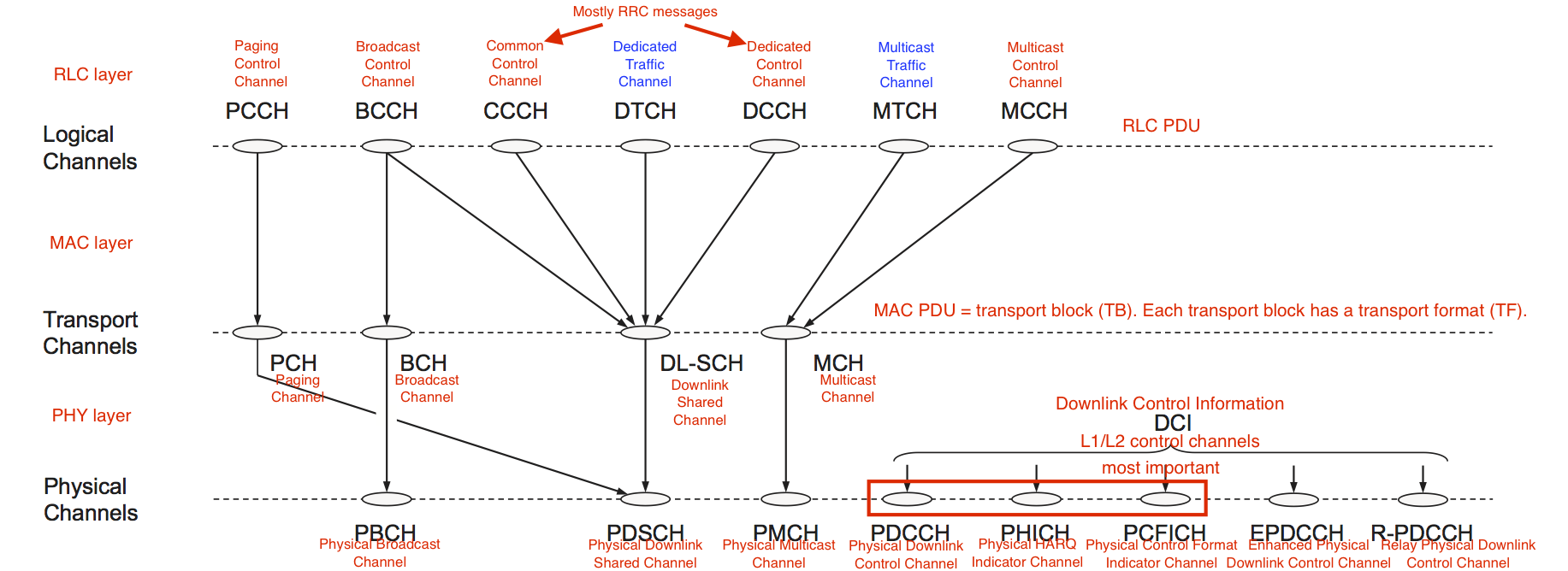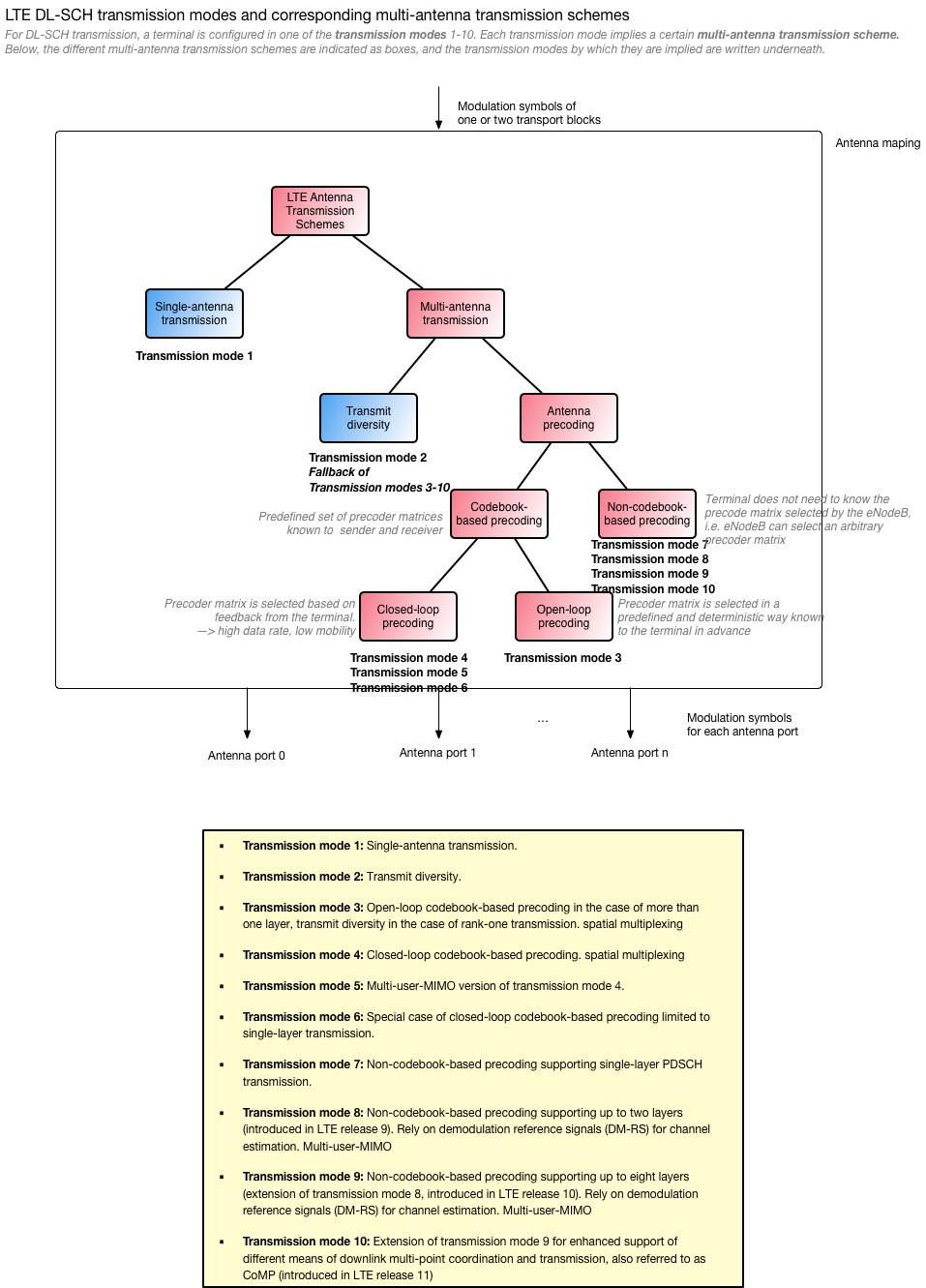Internal workings of LTE, with special focus on Layer 1 (PHY) and Layer 2 (MAC).
For a list of acronyms, see Acronyms.
Protocol Architecture
The layers of the LTE protocol:

A more detailed view:

Channels
A channel can be seen like a “category” of a piece of data that is passed between protocol layers (and exchanged between network entities).
Downlink
Channels used by the eNodeB:

Uplink
Channels used by the UE:

Downlink Data Flow
Flow of data packages that an eNodeB sends to an UE:

DL-SCH Processing in the PHY Layer
This shows what happens when the MAC layer on the eNodeB passes some data to the PHY layer on the DL-SCH channel:

The following shows the same as the above figure, but illustrated differently:

Transmission Modes

Acronyms
The following is a list of acronyms that are used in this document:
| LTE | Long-Term Evolution |
| UE | User Equipment |
| MME | Mobility Management Entity |
| NAS | Non-Access-Stratum |
| RRC | Radio Resource Control |
| PDCP | Packet Data Convergence Protocol |
| RLC | Radio Link Control |
| MAC | Medium Access Control |
| PHY | Physical |
| CRC | Cyclic Redundancy Check |
| HARQ | Hybrid Automatic Repeat Request |
| OFDM | Orthogonal Frequency-Division Multiplexing |
The acronyms of the channels are resolved directly in the figures of the downlink and uplink channels.
References
- Understanding LTE with Matlab (source of most figures)